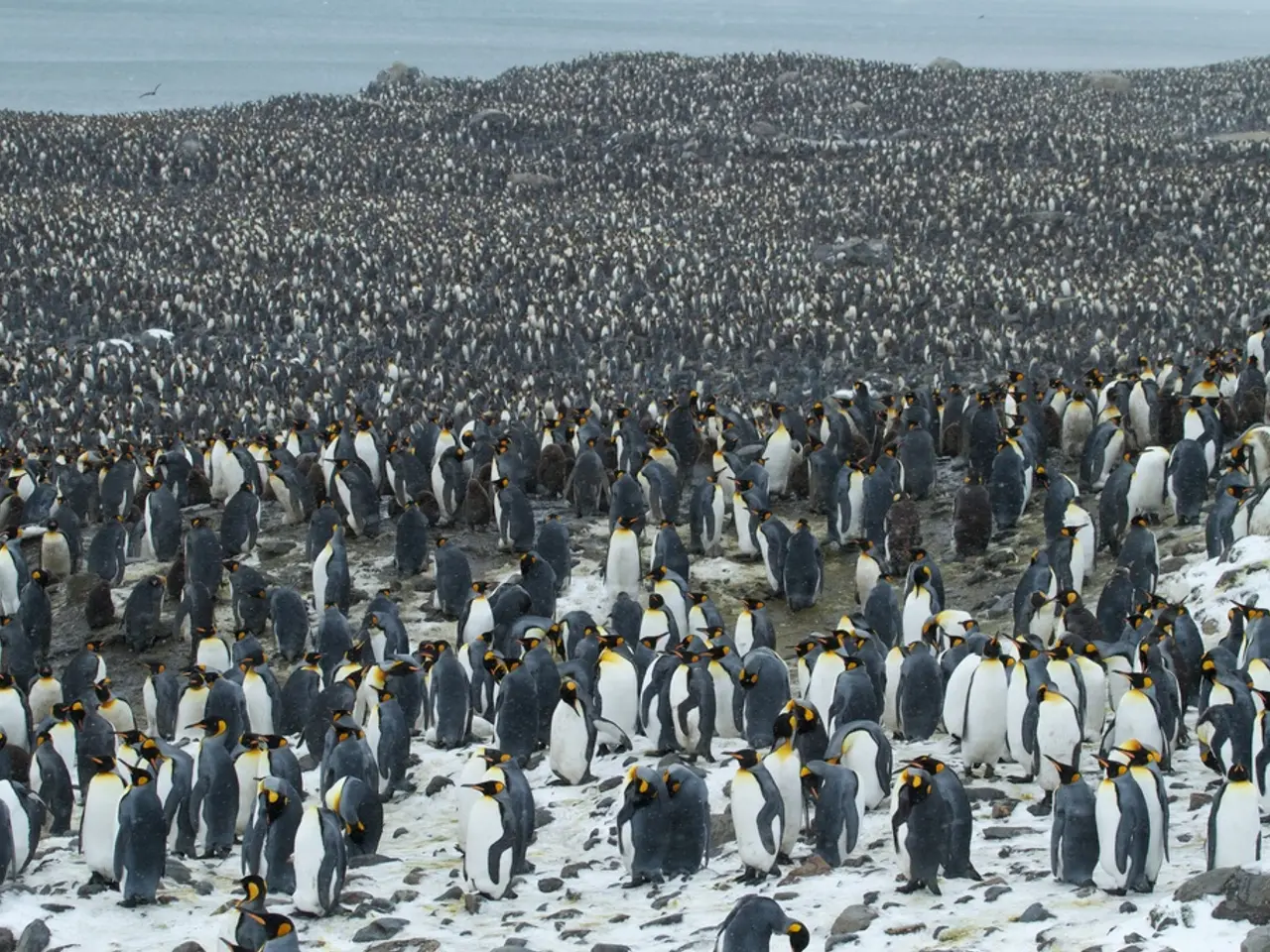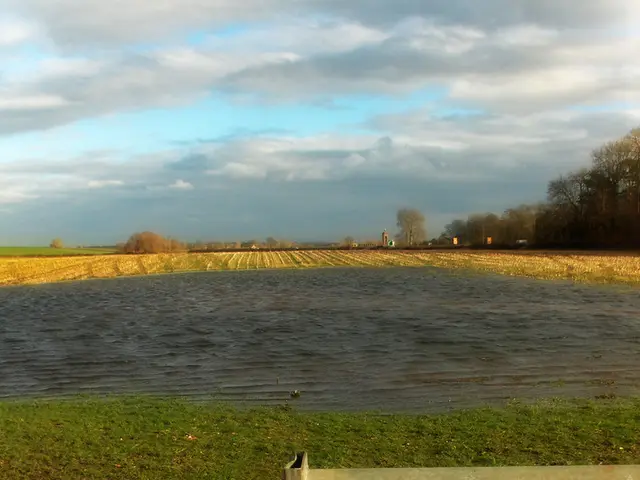Ocean's Tiniest Combatants in Peril: Krill Face Challenges from Heating Seas
In the vast expanse of the Southern Ocean, a delicate balance exists between the mighty whales, the waddling penguins, and the tiny krill. These microscopic creatures play a crucial role in the Antarctic ecosystem, serving as the primary food source for the larger marine life and helping to regulate the ocean's carbon dioxide levels. However, recent findings suggest that the krill population is under threat, and several international organizations and scientific institutions are taking action to protect these ocean guardians.
The Commission for the Conservation of Antarctic Marine Living Resources (CCAMLR) is at the forefront of these efforts. This organization coordinates the protection of Antarctic marine ecosystems, including krill management. CCAMLR develops guidelines for sustainable fishing and supports research projects aimed at mapping krill populations.
National space and marine research agencies, such as NASA (USA), ESA (Europe), JAXA (Japan), and CONAE (Argentina), are also contributing to the cause. They operate satellites that regularly provide data on ocean surface temperatures, chlorophyll concentrations (an indicator of phytoplankton, the krill's primary food source), and ice coverage. These data are used by scientific institutions for modelling and predicting krill populations.
The United Nations Environment Programme (UNEP) is another key player, supporting global environmental observations, including marine ecosystems like the Southern Ocean.
British Antarctic Survey (BAS), Alfred-Wegener-Institut (AWI) in Germany, National Oceanic and Atmospheric Administration (NOAA) in the USA, and the Australian Antarctic Division are among the scientific institutions using satellite remote sensing to study krill habitats, such as ice coverage and chlorophyll distribution.
International research programs like the Integrated Marine Observing System (IMOS) in Australia and the Southern Ocean Observing System (SOOS) are integrating various data sources, including satellites, to observe marine life.
Satellites like Landsat, Sentinel, MODIS, or VIIRS are used to capture data on ice, ocean colour, and temperature. The data are often provided through Copernicus (the European Earth Observation Programme) or NASA's Worldview and are analysed by scientists worldwide.
As the threat to the Antarctic krill becomes more apparent, calls for action are growing louder. Scientists are advocating for expanding Marine Protected Areas (MPAs) to cover 30% of the Southern Ocean by 2030. Recognising the urgency of the situation, stricter fishing quotas are being proposed, especially near wildlife feeding zones, and satellite-powered enforcement is being considered to track illegal fishing activities.
Despite having survived for millions of years, today's rapid climate change and industrial fishing pose an unprecedented threat to the Antarctic krill. Through international cooperation and innovative technology, the world is working to protect this vital link in the Antarctic food chain and ensure the survival of the iconic marine life that call the Southern Ocean home.
Read also:
- Peptide YY (PYY): Exploring its Role in Appetite Suppression, Intestinal Health, and Cognitive Links
- Toddler Health: Rotavirus Signs, Origins, and Potential Complications
- Digestive issues and heart discomfort: Root causes and associated health conditions
- House Infernos: Deadly Hazards Surpassing the Flames








